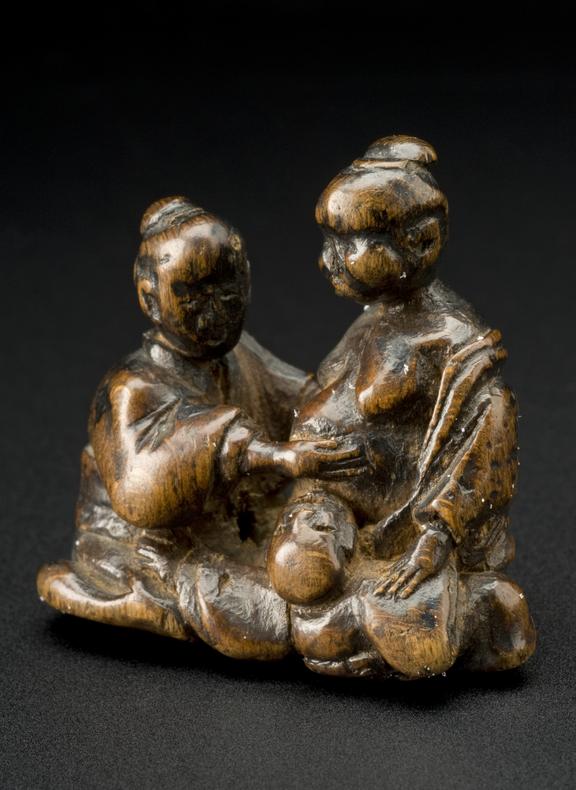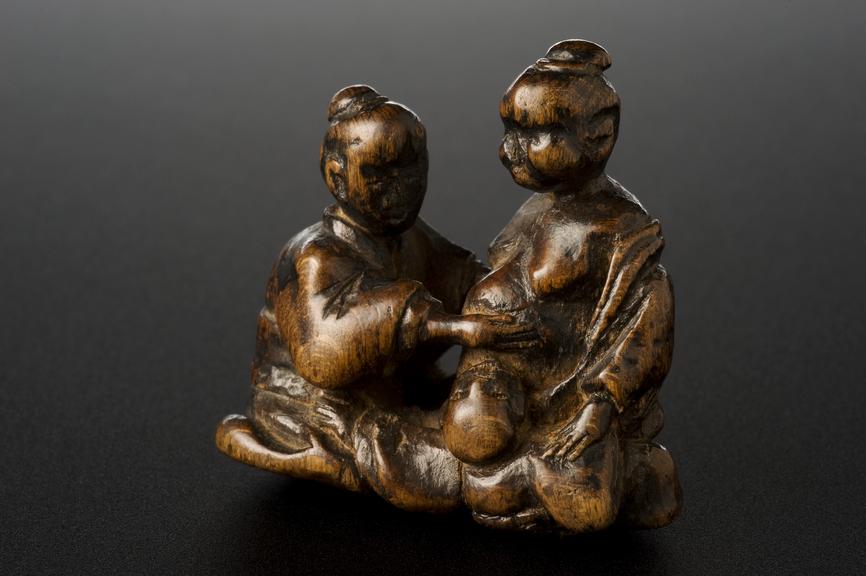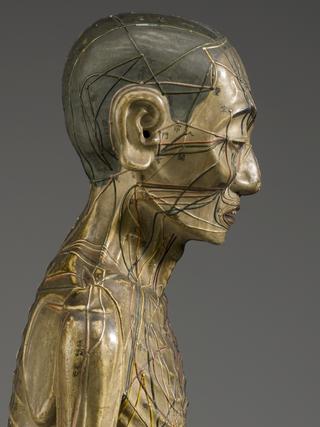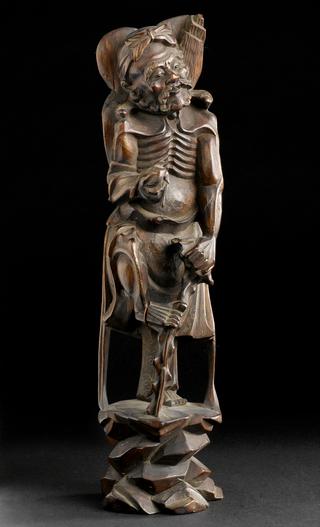






Wooden netsuke, in the form of two women, one is helping the other to give birth and the head of the baby is visible, Japanese, 1701-1900
This small wooden netsuke shows a woman assisting another woman in labour. The head of the baby is visible. Until recently, women were traditionally the main birthing assistants across all cultures. They often had little formal medical training. Women are still the main birthing assistants in much of the world today.
Netsuke are toggle-like ornaments. They hang objects such as medicine boxes or tobacco pouches from the sash of a kimono - a traditional Japanese dress. Netsuke are usually made from wood and ivory and are highly collectable.
Details
- Category:
- Asian Medicine
- Collection:
- Sir Henry Wellcome's Museum Collection
- Object Number:
- A641101
- Materials:
- wood (unidentified) and complete
- Measurements:
-
overall: 33 mm x 35 mm x 20 mm, .005kg
- type:
- netsuke




